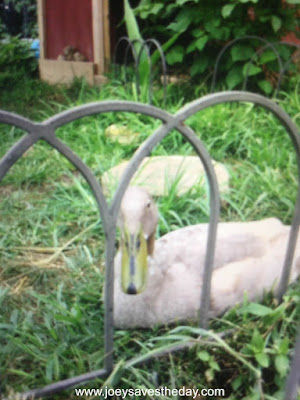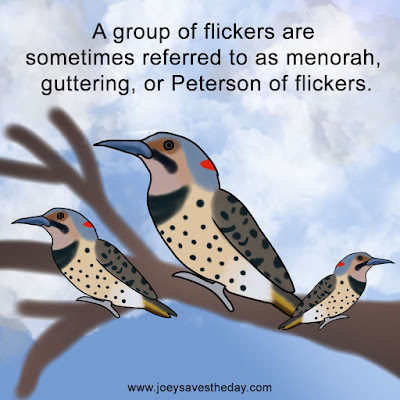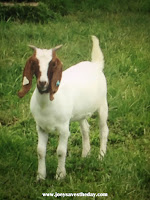Missouri Facts
Learn facts about Missouri for kids.
Last week, we inspired our community by sharing impactful facts about Mississippi. This week, we’re excited to share fascinating facts about Missouri, from its vibrant state flag to its beloved state bird and more. Join us on this journey of discovery as we countdown to sharing insights from all 50 states.
Did you know Missouri is the twenty-fourth state to join the Union? It officially entered the union on August 10, 1821, following a process of statehood that included several significant events in its early history. Missouri is situated in the Midwestern region of the country, characterized by its diverse landscapes, which include rolling hills, rivers, and dense forests.
Geographically, Missouri is bordered by eight states: to the north lies Iowa; to the east, you’ll find Illinois and Kentucky; to the south are Tennessee and Arkansas; and to the west, Oklahoma and Kansas. Additionally, Missouri shares a prominent boundary with the Mississippi River, one of the longest rivers in the United States, which plays a crucial role in the state's ecology and economy.
In terms of size, Missouri ranks as the twenty-first largest state in the country, covering approximately 69,715 square miles. This makes it one of the larger states in the U.S. The population of Missouri is around 6,168,187 residents, making it a vibrant region with a rich cultural tapestry and a diverse economy. The state is known for its historical significance, including its role in the westward expansion of the United States, and it continues to be a key part of the nation's landscape today.
Missouri famous person alert:
Did you know that Maya Angelou was born in St. Louis, Missouri? She was a poet, author, and civil rights activist best known for her seven autobiographies. An autobiography is a written account of a person's life that they have written about themselves. The first book in this series is titled *I Know Why the Caged Bird Sings*.
Facts about Missouri:
1. Missouri is a state rich in history and culture, recognized for its significant contributions to American heritage. Among its notable highlights are the Pony Express, a mail service that operated in the 1860s and became famous for its speedy delivery across the western frontier; the fertile farmlands that stretch across its landscape, providing vital agricultural products; and the Lewis and Clark Expedition, which embarked from St. Louis in 1804, exploring the newly acquired western territories of the United States.
The state is affectionately nicknamed the "Show Me State," reflecting the Missourian's reputation for being straightforward and skeptical. Other popular nicknames include the "Ozark State," named after the picturesque Ozark Mountains that attract tourists and outdoor enthusiasts, and the "Mother of the West," acknowledging its historical role as a launch point for westward expansion.
Missouri's state motto, "Salus populi suprema lex esto," translates from Latin to "The welfare of the people is the supreme law." This motto encapsulates the state's commitment to prioritizing the needs and well-being of its residents. It was officially adopted on January 22, 1822, and remains a guiding principle for governance in the state.
To reference the state in writing, the standard abbreviation is MO, which is commonly used in postal addresses and official documents. Missouri is not just a place on the map; it embodies a rich tapestry of history, culture, and community.
2. The capital of Missouri is Jefferson City, which was designated as the state capital in 1821, following Missouri's admission to the Union. The city is named in honor of Thomas Jefferson, who served as the third president of the United States from 1801 to 1809 and is known for his role in authoring the Declaration of Independence. Jefferson City is centrally located along the Missouri River and plays a crucial role in the state's government and politics. It has an estimated population of approximately 42,670 residents, reflecting a diverse community that contributes to the city's rich history and vibrant culture. The city is home to several historic landmarks, including the Missouri State Capitol building, which showcases stunning architecture and serves as a hub for state legislative activities.
3. The state bird of Missouri is the Eastern bluebird (Sialia sialis), which was officially designated on March 30, 1927. This charming songbird is widely recognized for its striking and vibrant coloration. The male Eastern bluebird displays a brilliant deep blue plumage on its back and wings, which can be captivating when caught in sunlight. In contrast, the female tends to have a more subdued appearance, featuring softer shades of blue and brown.
One of the defining characteristics of the Eastern bluebird is its rich, reddish-brown, or rust-colored throat, which contrasts nicely with its blue feathers. The bird's underbelly is a soft, creamy white, adding to its overall elegance. Eastern bluebirds are not only visually stunning but also have a melodious song that can be heard in open fields and during the spring and summer months.
These birds prefer open habitats, such as meadows and farmlands, where they can often be seen perched on fence posts or tree branches, watching for insects and small fruit to eat. The Eastern bluebird symbolizes happiness and is cherished by birdwatchers and nature enthusiasts across Missouri, making it a beloved representative of the state’s natural beauty.
4. The official state flower of Missouri is the Crataegus punctata, also known as the White Hawthorn blossom. This perennial tree or shrub typically reaches heights of 15 to 30 feet and is characterized by its dense, thorny branches and glossy green leaves. The White Hawthorn is particularly admired for its stunning clusters of white flowers, which bloom from late May to early June, creating a beautiful display across the Missouri landscape.
These blossoms enhance the state's aesthetic appeal and attract pollinators like bees and butterflies, contributing to local biodiversity. The Crataegus punctata holds cultural significance and was officially designated as Missouri's state flower on March 16, 1923. This designation reflects the appreciation for the flower's beauty and presence in Missouri's natural environment.
5. Missouri’s state flag was officially adopted on March 22, 1913, and is a symbol of the state's history and identity. The flag is designed with three horizontal stripes: a vibrant red stripe at the top, a white stripe in the middle, and a deep blue stripe at the bottom.
At the center of the flag is Missouri’s coat of arms, which features elements that represent the state's rich heritage. Surrounding the coat of arms are 24 stars, which signify Missouri's position as the 24th state to join the United States. This arrangement of stars highlights the pride and significance of Missouri’s entry into the Union. The flag exemplifies both the state’s values and the unity of its residents.
6.Missouri is known for its diverse agricultural output, with several key crops contributing to the state's economy and food supply. Among these crops are corn, which is widely used for both animal feed and ethanol production; cotton, essential for the textile industry; oats, often utilized for livestock feed and human consumption; rice, a staple food for many cultures; soybeans, which are a vital source of protein and oil; and wheat, a fundamental ingredient in bread and other baked goods. Each of these crops plays an important role in Missouri’s agricultural landscape, reflecting the state's rich farming heritage and commitment to sustainable practices.
7. Missouri is home to a variety of fascinating attractions worth visiting. One standout is the Ha Ha Tonka Castle Ruins, located in the picturesque town of Camdenton. This historic site features the remnants of a stone castle that was built in the early 20th century and offers beautiful views of the surrounding Ozark landscape.
Another must-visit destination is the Saint Louis Zoo, renowned for its commitment to conservation and education. This award-winning zoo houses over 15,000 animals from around the world and provides a fun and engaging experience for visitors of all ages.
Additionally, the Wilson's Creek National Battlefield, situated near Springfield, is a significant historical site that commemorates a key battle of the Civil War. Visitors can explore the well-preserved grounds, learn about the history of the conflict, and enjoy hiking trails amidst the scenic beauty of the area. Each of these locations offers a unique glimpse into Missouri’s rich cultural and natural heritage.
8. Missouri is home to a diverse range of wildlife, including several notable animal species. Among these are bobcats, which are elusive predators known for their tufted ears and spotted fur. Beavers, recognized for their impressive dam-building skills, play a vital role in aquatic ecosystems. Brown bats, important for their insect-eating habits, can often be seen flitting about at dusk.
Coyotes, adaptable and resourceful hunters, roam various habitats across the state. The eastern copperhead, a venomous snake with distinctive coloring, is another resident of Missouri’s forests and woodlands. Groundhogs, or woodchucks, are common sight, especially in open fields, where they dig extensive burrows. Raccoons are often found near water sources, known for their dexterous front paws and masked faces. Red foxes, with their bushy tails and cunning nature, are a familiar presence in both rural and urban areas. Finally, the white-tailed deer, a symbol of the American wilderness, can be spotted gracefully roaming Missouri’s wooded landscapes and open fields. Together, these animals contribute to the rich biodiversity of the region.
9. Missouri can really swing in temperatures throughout the year. On the hottest day ever, it got up to 118 degrees Fahrenheit in Warsaw on July 14, 1954. On the flip side, the coldest it’s ever been hit a bone-chilling -40 degrees Fahrenheit in Warsaw on February 13, 1905.
Get your free printable Missouri worksheet here:
Missouri worksheet
Visit my printables section for a wide selection of
worksheets and coloring sheets!
Books about Missouri:
1. Good Night Missouri by Adam Gamble
2. Kids Love Missouri by George Zavatsky
3. My First Book About Missouri! by Carole Marsh
4. Little Missouri by Judy Young
Parents and caretakers, always choose books that are appropriate for your child or children before reading to them. It's essential for fostering a positive reading experience!
You can Click here to purchase the 50 States workbook on Amazon.
Be sure to tune in next week to discover some fascinating facts about Montana! Thank you for reading my post!! “Just one small positive
thought in the morning can change your whole day.”-Dalai Lama.
































